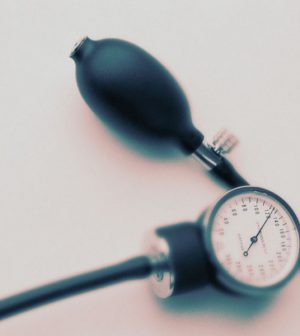- Navigating Your Midlife Crisis: Embracing New Possibilities
- City Raccoons Showing Signs of Domestication
- Mapping the Exposome: Science Broadens Focus to Environmental Disease Triggers
- One Week Less on Social Media Linked to Better Mental Health
- Your Brain Changes in Stages as You Age, Study Finds
- Some Suicide Victims Show No Typical Warning Signs, Study Finds
- ByHeart Formula Faces Lawsuits After Babies Sickened With Botulism
- Switch to Vegan Diet Could Cut Your Greenhouse Gas Emissions in Half
- Regular Bedtime Does Wonders for Blood Pressure
- Dining Alone Could Mean Worse Nutrition for Seniors
New Advice for Blood Pressure That’s a Bit Too High

If making healthy lifestyle changes doesn’t lower a patient’s slightly high blood pressure within six months, doctors should then consider prescribing medication, a new American Heart Association scientific statement advises.
The recommendation is for people with untreated stage 1 high blood pressure (130-139/80-89 mm Hg) who have a low risk of a heart attack or stroke within 10 years. Low risk means less than 10%.
The statement updates the 2017 American College of Cardiology/American Heart Association Blood Pressure Management Guidelines, which suggested first having these people make healthy lifestyle changes and then checking their blood pressure again in six months.
The new guidance applies to nearly 10% of American adults with high blood pressure.
“There are no treatment recommendations in [the 2017] guidelines for patients who are at relatively low short-term risk of heart disease when blood pressure does not drop below 130 mm Hg after six months of recommended lifestyle changes,” statement writing group chair Dr. Daniel Jones said in an AHA news release.
“This statement fills that gap,” noted Jones, professor and dean emeritus at the University of Mississippi School of Medicine, and a past president of the heart association.
Many people with stage 1 high blood pressure are adults younger than 40.
“We know that people with blood pressure lower than 130/80 mm Hg have fewer markers of cardiovascular risk like elevated coronary calcium, enlargement of the heart, or buildup of fatty deposits called atherosclerosis in arteries of the neck. There is strong evidence that treating high blood pressure saves lives by reducing the risks for heart attack and stroke,” Jones said.
Healthy lifestyle changes to lower blood pressure include weight loss/control, regular exercise, limiting salt intake, boosting potassium intake, not smoking and limiting alcohol use. Also recommended is following the Dietary Approaches to Stop Hypertension (DASH) diet. This is an eating plan high in fruits and vegetables combined with low-fat dairy products, and low in saturated fat and total fat.
It’s also important for patients to “check their blood pressure regularly to monitor progress. If they don’t achieve average daily systolic blood pressure less than 130 mm Hg, it’s probably time to initiate a conversation with their doctor about practical next steps, which may include adding medication, to manage their blood pressure,” Jones said.
The statement was published April 29 in the journal Hypertension. It also said that in young adults who started taking blood pressure-lowering medicines during childhood, doctors should consider the original indication for beginning treatment (usually to prevent organ damage from long-term high blood pressure) in assessing the need to continue medication and lifestyle changes.
More information
The U.S. National Heart, Lung, and Blood Institute has more on high blood pressure.
SOURCE: American Heart Association, news release, April 29, 2021
Source: HealthDay
Copyright © 2025 HealthDay. All rights reserved.










